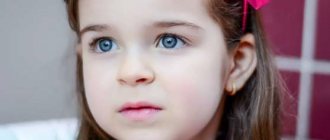Psychophysiological features in the ontogenetic development of children who have deficiencies in the general laws of the physical or psychological aspects of upbringing and teaching are studied by the science of defectology. It consists of a number of specialized branches, such as typhlopedagogy, deaf pedagogy, typhlopsychology and speech therapy. Practical speech therapy plays one of the leading roles in addressing issues of speech dysfunction. Without dwelling on the first three branches, let's move straight to the last one, namely, the science that studies speech deficiencies, methods of their detection, prevention and correction through special training and the use of various teaching methods, i.e. speech therapy.
Like any other science, it has its own goals, principles, methodological basis and subject of study. The principles of speech therapy lay the foundation for its further study, and the methods of speech therapy provide a direct indication of the list of arsenal used. The subject of attention of speech therapy as a science is the study of various disorders of speech function, as well as the educational and training processes of persons with speech disorders. The main goal of this science is to develop scientific approaches to the systematized process of teaching, upbringing, as well as re-education of children with speech defects, and preventing their development. Structurally, modern speech therapy consists of several sections: for preschoolers, for schoolchildren and speech therapy for adults.
Speech therapy - principles of science. General didactic principles of speech therapy
The main principles of speech therapy include:
- complexity;
- consistency;
- principle of using a workaround;
- taking into account the characteristics of individual development;
- highlighting priority tasks;
- the principle of an integrated approach to the study of speech dysfunction and mental development of the baby;
- activity and etiopathogenetic principles;
- general didactic principles of speech therapy.
Some principles, because of their special significance, are worth considering in more detail. The principle of systematicity implies the study of speech deficiencies in close connection with other components of the system. Accordingly, it is necessary to influence all components.
Speech dysfunctions may accompany neuropsychic or nervous diseases. Such shortcomings can only be eliminated through complex, targeted interventions of a medical, psychological and pedagogical nature. The principle of development implies setting priorities and identifying stages that need to be worked on first.
The ontogenetic principle consists in developing a methodological basis for correctional speech therapy, with mandatory consideration of the sequential appearance of speech forms, as well as the individual development of the baby. The principle of the workaround is the formation of a new link in the functional speech system, replacing the affected one. Separately, it is worth paying attention to the general didactic principles of speech therapy, which include the clarity of the material, its accessibility for perception, the consciousness of the child, an individual approach to everyone, etc. They make a tangible contribution to the system of all the principles of this science and occupy one of the most important places in it. And they are also taken into account when using health-saving technologies in speech therapy.
Basic Concepts
Disorders of speech activity, which speech therapy deals with, are considered to be deviations in the functioning of the muscles of the speech apparatus, disturbances in the pronunciation of sounds or intonation, underdevelopment of speech, pathological development against the background of diseases and other anomalies.
Such defects are studied and determined by specialists in various scientific fields. In the course of studying speech defects, each deviation is considered in accordance with the goals, objectives and methods of each scientific area.
The meaning of speech therapy in this case is the study of the disorder with the aim of preventing it, as well as eliminating it with the help of special programs of correctional education or training. Therefore, speech therapy is considered a branch of special pedagogy. Its structure today is:
- Preschool and school speech therapy.
- Speech therapy for teenage children.
- Speech therapy for adults.
The theoretical foundations of speech therapy make it possible to study the etiology of speech disorders using the evolutionary-dynamic method in combination with the principle of unity of dialectical, biological and social aspects of the development of the speech apparatus.
Based on this, the tasks of speech therapy are determined:
- Study of individual speech characteristics for each form of speech deviation.
- Identification of symptoms, nature of development and degree of deviation of speech activity.
- Determination of development trends in children with speech disorders.
- Identification of the connection between speech disorders and the formation of mental, physical health and personality development.
- Study of the formation of the speech apparatus in children with various developmental defects and the presence of speech deviations.
- Identification of the nature of the occurrence of the disorder, its mechanism of action, accompanying symptoms, as well as structure.
- Development of pedagogical and other methods of knowledge of speech disorders.
- Systematization of acquired practical and theoretical knowledge to create a basis for improving methods for studying speech defects.
- Development of new methods, techniques and principles to prevent and eliminate violations.
- Formulating and raising new, topical issues related to the organization of programs to provide appropriate assistance to people with speech disorders.
The tasks of this scientific direction presented above consider speech disorders from the point of view of:
- Theories - the study of speech disorders in order to be able to develop new methods for prevention, identifying propensities for deviations and overcoming them.
- Practices - the use of preventive measures, methods to identify and eliminate deviations in the speech apparatus.
As you can see, the theoretical side and practical experience of speech therapy are closely related, which allows for a comprehensive scientific approach to solving the problems of diction defects.
Carrying out its direct scientific activities, this branch is based on the basic principles of speech therapy:
1. Systematic principle – considers speech as a unique system with its own complex structure, the components of which are studied separately to obtain an overall picture of the capabilities and structure of the speech apparatus.
2. The principle of complexity – takes into account the patterns and specific features of the development of individuals if they have speech defects.
We recommend: Dyslexia is
3. The principle of development - when carrying out correctional and speech therapy activities, it involves determining the main stages, tasks and identifying complications associated with the immediate environment of the person.
4. The principle of considering speech disorders against the background of the individual’s mental state and its aspects.
5. The principle of the activity approach - for organizing a speech therapy program for raising or training a child with diction disorders, the leading one is his direct activity (games, training, practice).
6. The principle of orthogenetic features.
7. Etiopathogenetic and symptomatic principle.
8. A principle that takes into account the structure of diction defects.
9. The principle of a workaround – considers the possibility of forming a new principle for the functioning of speech “bypassing” the component, which is a violation.
10. General didactic principles.
It is worth noting that the basis of the scientific method is speech therapy principles, general didactic, as well as special (principles of development, systematization of techniques and interconnectedness). They are a practical reinforcement of the theory of R.E. Levina regarding an integrated approach to the implementation of speech therapy activities, which takes into account the characteristics of the individual (in the motor, sensory, volitional and emotional spheres).
Methods of speech therapy and speech therapy intervention
Method (the word comes from the Greek methodos) is a way or way of research, presentation of material or the course of the learning process. The use of certain methods is determined by cognitive or practical goals, the subject of study and specific conditions. Speech therapy methods represent a set of theoretical and practical knowledge that is aimed at achieving the goals as quickly as possible.
There are several groups of speech therapy methods:
- organizational. These include comparative, longitudinal and comprehensive;
- empirical methods;
- quantitative;
- interpretative;
The success of the entire speech therapy intervention as a whole depends on the correctness of the chosen methods for eliminating speech deficiencies. The methods of speech therapy, as well as the principles of speech therapy, have been developed over many years, and therefore represent a huge combined body of knowledge from many scientists around the world. Particular attention should be paid to the contribution that “speech therapy” T.B. Filicheva made to science. It is important to understand that only through a correctly selected set of intervention methods can existing speech dysfunction be eliminated. Since speech therapy as a science in general is aimed at eliminating various speech deficiencies, the use of a set of practical measures to normalize speech function plays a significant role.
Conceptual and categorical apparatus of speech therapy
From the point of view of communication theory, speech disorder is a violation of verbal communication. The relationships that objectively exist between the individual and society and are manifested in verbal communication are upset. Speech disorders are characterized by the following features:
1) inappropriate for the speaker’s age;
2) not being dialecticisms, illiteracy of speech and expression of ignorance of the language;
3) associated with deviations in the functioning of the psychophysiological mechanisms of speech;
4) of a stable nature, not disappearing on their own, but becoming established;
5) requiring a certain speech therapy intervention depending on their nature;
6) often having a negative impact on the further mental development of the child.
A distinction is made between the concepts of “speech underdevelopment” and “speech impairment”.
Underdevelopment of speech implies a qualitatively lower level of formation of a particular speech function or the speech system as a whole.
A speech disorder is a disorder, a deviation from the norm in the process of functioning of the mechanisms of speech activity. For example, with underdevelopment of the grammatical structure of speech, there is a lower level of assimilation of the morphological system of the language and the syntactic structure of the sentence. Violation of the grammatical structure of speech is characterized by its abnormal formation and the presence of agrammatisms.
General speech underdevelopment is a form of speech anomaly in which the formation of all components of speech is impaired. The concept of “general speech underdevelopment” presupposes the presence of symptoms of immaturity (or developmental delay) of all components of the speech system (phonetic-phonemic side, lexical composition, grammatical structure). General speech underdevelopment may have a different mechanism and, accordingly, a different structure of the defect.
Delayed speech development is a slowdown in the rate at which the level of speech development does not correspond to the age of the child.
“Speech decay” is the loss of existing speech and communication skills due to local or diffuse brain damage.
The structure of a speech defect is a set of speech and non-speech symptoms of a given speech disorder and the nature of their connections. In the structure of a speech defect, there is a primary, leading disorder (core) and secondary defects, which are in a cause-and-effect relationship with the first ones, as well as systemic consequences. The different structure of a speech defect is reflected in a certain ratio of primary and secondary symptoms and largely determines the specifics of targeted speech therapy intervention.
Correction of speech disorders is the correction or weakening of the symptoms of speech disorders.
Restorative learning is the correction of speech resulting from local brain damage.
Practical speech therapy and its role in correcting the dynamics of speech development
A number of textbooks, manuals and monographs have been written on practical speech therapy, aimed at correcting the dynamics of speech and eliminating its defects. In general, this industry is dedicated to methods, techniques and practical advice for highly specialized specialists. Practical speech therapy is the embodiment of the goals pursued by speech therapy as a science as a whole. Some of the textbooks have a wider target audience and are also designed for parents, tutors, and other persons directly involved in the process of raising a child. You can work with a child from 3-4 years old, and with the right approach, the techniques give tangible results . During the educational process, general didactic principles of speech therapy are widely used.
Leaders of speech therapy. Filicheva Tatyana Borisovna
Tatyana Borisovna Filicheva - made a huge contribution to the development of a system of methods for eliminating speech defects. Her name is known both among defectologists and speech therapists. Tatyana Borisovna's specialty is preschool speech therapy. Filicheva T.B. – is a Doctor of Pedagogical Sciences, has a professorship and is the author of more than forty published scientific articles. Her published works are popular both among domestic speech therapists and doctors of the relevant field outside the country. Her research and developments became the basis for the developed set of measures to overcome underdevelopment in children of primary school age. A number of Tatyana Borisovna’s works were awarded the honorary Grant Prize. Speech therapy is her native environment, her life and her heritage.
Speaking about the meaning in speech therapy Filicheva T.B. It is impossible not to mention her wide participation in the writing of textbooks for speech therapists. She became one of the co-authors of fundamental manuals used in the educational process, writing entire sections for them. Some works by Filicheva T.B. translated into other languages and then published in separate editions abroad. The visual material developed by Tatyana Borisovna is widely popular among practicing speech therapists and has been awarded a special award - the USSR Academy of Sciences Prize.






